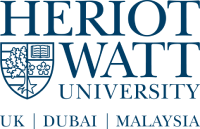Prof D Townsend
Applications accepted all year round
Funded PhD Project (European/UK Students Only)
About the Project
This experimental project will investigate photoelectron circular dichroism (PECD) in chiral molecules (i.e. molecules exhibiting distinct left- and right-handed forms that are non-superimposable mirror images). Chirality is hugely important in chemistry and biology, since many of the building blocks of life display this property - with one handedness always preferred. Living organisms, for example, use only left-handed amino acids and right-handed sugars, and the fundamental origin of this phenomenon remains one of the great un-answered scientific questions. Moreover, since synthetically produced molecules of differing handedness may interact very differently with living systems, significantly improved health or environmental outcomes may result from the commercial production of chirally pure pharmaceuticals and pesticides to improve the efficacy or safety of treatments.
In most respects, pairs of chiral molecules show identical physical and chemical properties - except when they meet another chiral object. Interaction with circularly polarized light therefore provides a route to chiral discrimination. Conventional circular dichroism (i.e. differential absorption of left- and right-handed light) arises due to interference between optical transitions induced by electric and magnetic dipoles. The effect is therefore weak, lacking sensitivity. PECD, however, relies on photoionization and originates from scattering of the ejected electron off the chiral molecular potential. This is driven solely via electric dipole transitions and is typically orders of magnitude larger than more conventional circular dichroism. PECD therefore potentially offers a route for more sensitive identification of chirally pure products.
To observe PECD, chiral molecules will be ionized with intense, circularly polarized light from a femtosecond laser. Electrons are then ejected asymmetrically from the molecule at angles that are dependent upon its handedness. By imaging the angular distribution of the electrons, the fundamental origin of this phenomenon can be investigated in detail. A particular focus will be the systematic variation and positioning of multiple chiral centres within series of carefully chosen molecular systems. The project is well suited to those with an interest in optics, lasers and spectroscopy. Some software development for data acquisition/analysis will also be required.

 Continue with Facebook
Continue with Facebook

